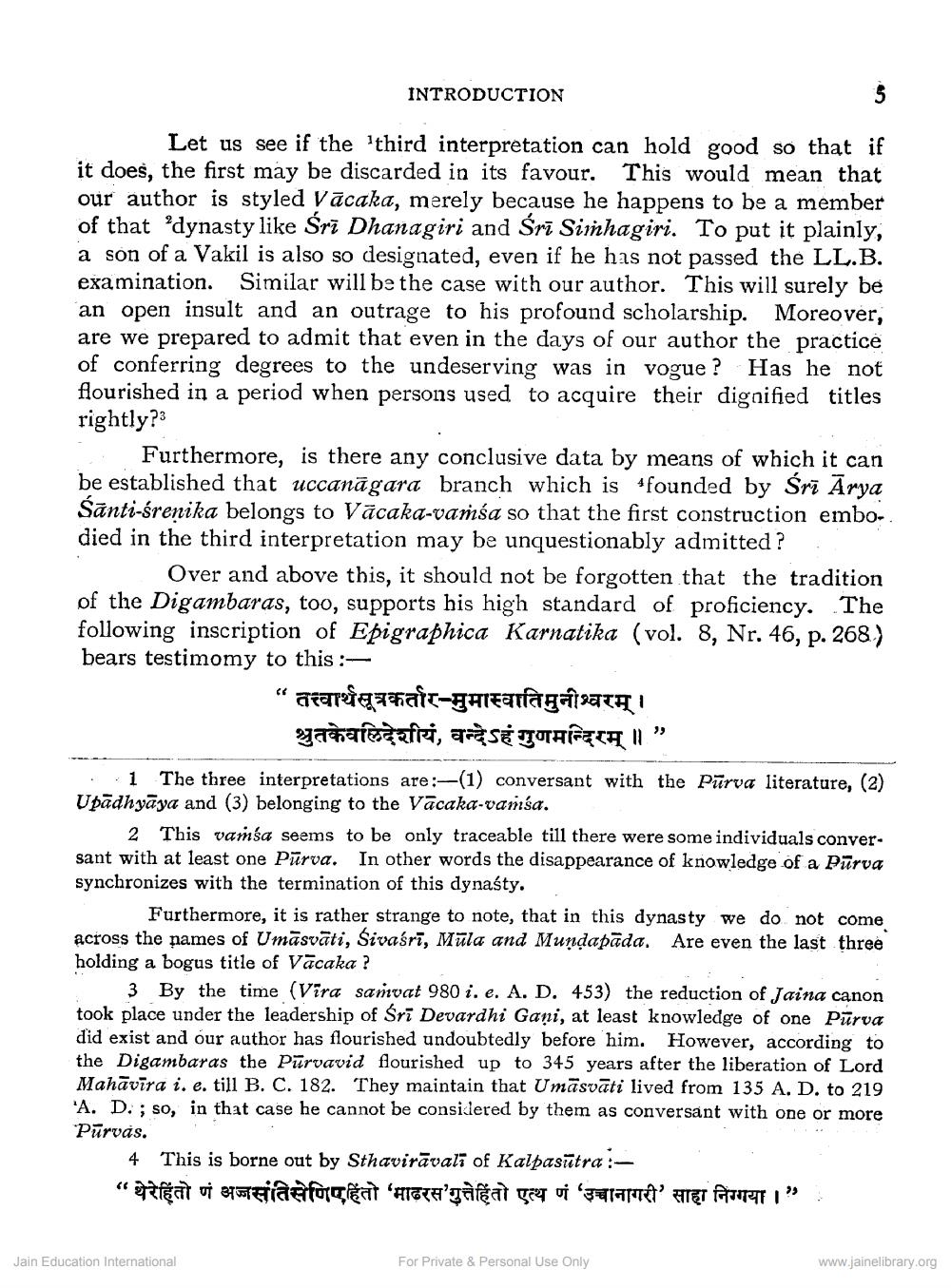________________
INTRODUCTION
Let us see if the third interpretation can hold good so that if it does, the first may be discarded in its favour. This would mean that our author is styled Vācaka, merely because he happens to be a member of that dynasty like Sri Dhanagiri and Sri Simhagiri. To put it plainly, a son of a Vakil is also so designated, even if he has not passed the LL.B. examination. Similar will be the case with our author. This will surely be an open insult and an outrage to his profound scholarship. Moreover, are we prepared to admit that even in the days of our author the practice of conferring degrees to the undeserving was in vogue ? Has he not flourished in a period when persons used to acquire their dignified titles rightly?
Furthermore, is there any conclusive data by means of which it can be established that ucсanāgara branch which is founded by Sri Sānti-śrenika belongs to Vācaka-vamsa so that the first construction embodied in the third interpretation may be unquestionably admitted ?
Over and above this, it should not be forgotten that the tradition of the Digambaras, too, supports his high standard of proficiency. The following inscription of Epigraphica Karnatika (vol. 8, Nr. 46, p. 268.) bears testimomy to this:
"geariaznait-ghiwalagajatą 1
श्रुतकेवलिदेशीयं, वन्देऽहं गुणमन्दिरम् ॥" 1 The three interpretations are: (1) conversant with the Pūrva literature, (2) Upadhyāya and (3) belonging to the Vācaka-vamsa.
2 This vamša seems to be only traceable till there were some individuals conversant with at least one Pūrva. In other words the disappearance of knowledge of a Pūrva synchronizes with the termination of this dynasty.
Furthermore, it is rather strange to note, that in this dynasty we do not come across the names of Umāsvāti, Sivasri, Müla and Mundapāda. Are even the last three holding a bogus title of Vācaka ?
3 By the time (Vira samvat 980 i. e. A. D. 453) the reduction of Jaina canon took place under the leadership of Sri Devardhi Gani, at least knowledge of one Pūrva did exist and our author has flourished undoubtedly before him. However, according to the Digambaras the Pūrvavid flourished up to 345 years after the liberation of Lord Mahāvīra i.e. till B. C. 182. They maintain that Umāsvāti lived from 135 A. D. to 219 'A. D.; so, in that case he cannot be considered by them as conversant with one or more Pūrvas.
4. This is borne out by Sthavirāvali of Kalpasūtra :“थेरेहिंतो णं अजसंतिसेणिएहितो 'माढरस'गुत्तेहिंतो एत्थ णं 'उच्चानागरी' साहा निग्गया।" .
Jain Education International
For Private & Personal Use Only
www.jainelibrary.org




